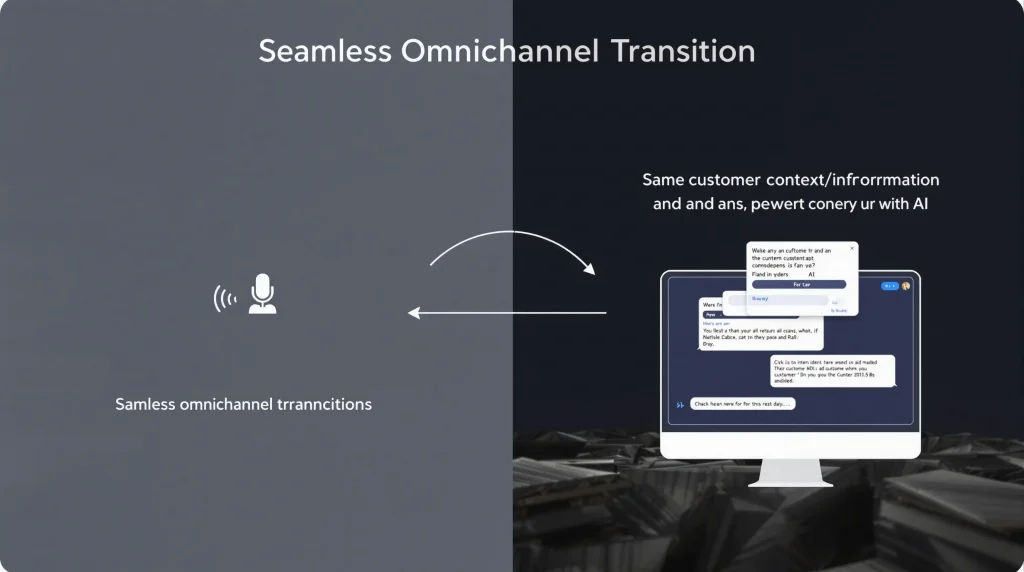Multilingual AI Customer Support in 2025: Expanding Global Reach
Estimated Reading Time: 8 minutes
Key Takeaways:
- Multilingual AI customer support breaks down language barriers and helps businesses expand globally
- Modern AI translation technology now provides near-native contextual understanding
- Businesses can provide 24/7 support in multiple languages without expanding staff
- Cultural sensitivity in AI responses helps create authentic customer experiences
Table of Contents:
- Breaking Language Barriers
- Benefits of Multilingual AI Support
- Implementation Strategies
- Measuring Multilingual Success
- Future of Global AI Support
- Frequently Asked Questions
Breaking Language Barriers
In today’s global marketplace, businesses can no longer afford to operate in a single language. The ability to communicate with customers in their native tongue is no longer a luxury but a necessity for companies with international aspirations. Multilingual AI customer support systems have emerged as the solution, breaking down language barriers and enabling businesses of all sizes to provide seamless support worldwide.
Modern AI translation has evolved dramatically from the awkward, literal translations of the past. Today’s systems leverage neural machine translation and deep learning to understand context, idioms, and even cultural nuances—providing conversations that feel natural rather than robotic.

The most advanced multilingual AI systems can now detect a customer’s language automatically and switch contexts on the fly. This means customers no longer need to navigate through language selection menus or explicitly request their preferred language—the AI adapts to them, creating a more natural customer experience from the first interaction.
“The ability to speak to customers in their native language increases satisfaction by 74% and purchase likelihood by 58%. Multilingual support isn’t just about translation—it’s about creating authentic connections.”
Benefits of Multilingual AI Support
The advantages of implementing multilingual AI customer support extend far beyond simple translation. Here are the key benefits businesses are experiencing in 2025:
Global Market Expansion
By removing language barriers, businesses can confidently enter new markets without the immediate need to hire local support teams. This allows for testing market viability before making significant investments in regional operations, reducing the risk of international expansion.
24/7 Support in All Languages
Perhaps the most compelling advantage is the ability to provide round-the-clock support in dozens of languages without expanding staff. Even small businesses can now offer enterprise-level global support capabilities, leveling the playing field against larger competitors.

Culturally Nuanced Interactions
Advanced AI systems now incorporate cultural training alongside language models. This means they understand not just words, but cultural contexts, holidays, etiquette, and regional preferences. For example, a properly trained AI can adjust its tone to be more formal in Japanese conversations while maintaining a friendlier approach with American customers.
Consistency Across Languages
Maintaining consistent brand voice and support quality across multiple languages is challenging with human teams. Multilingual AI ensures that your company’s messaging, solutions, and brand voice remain consistent regardless of language, while still adapting to cultural nuances where appropriate.
Implementation Strategies
Successfully deploying multilingual AI support requires careful planning and strategic implementation. Here are the approaches that leading companies are taking in 2025:
Prioritizing Languages Strategically
Rather than attempting to support all languages simultaneously, successful businesses typically start with their top 3-5 markets and expand from there. This allows for proper fine-tuning of language models and cultural adaptation before scaling further.
Hybrid Human-AI Approach
The most effective implementations use AI as the first line of support with human escalation paths for complex issues. Human agents who are native speakers can review AI interactions periodically, providing feedback that improves the system’s language models and cultural understanding over time.

Custom Language Training
Generic translation models aren’t sufficient for customer support scenarios. Leading businesses are investing in industry-specific and company-specific language training, ensuring their AI understands specialized terminology and can discuss products intelligently in any language.
Continuous Improvement Loops
Successful multilingual support implementations include feedback mechanisms where customers can rate the quality of translation and understanding. This data feeds directly into improved language models, creating a continuous improvement cycle that progressively enhances language capabilities.
Measuring Multilingual Success
To ensure your multilingual AI support is delivering real value, you need appropriate metrics that go beyond standard customer service KPIs. Here are the key measurements businesses are tracking in 2025:
Language-Specific Satisfaction
Track customer satisfaction scores segmented by language to identify which language models are performing well and which need improvement. Significant variations between languages often indicate areas where cultural training or translation quality needs enhancement.
Translation Accuracy Metrics
Modern systems can self-assess translation confidence and flag potential misunderstandings. Track these confidence scores and the frequency of clarification requests to identify languages where your AI might be struggling with nuanced understanding.
Regional Conversion Rates
The ultimate measure of multilingual support success is its impact on business metrics in each region. Monitor conversion rates, average order values, and retention rates by language to quantify the ROI of your multilingual implementation.

Future of Global AI Support
As we look beyond 2025, several emerging trends are poised to further revolutionize multilingual AI support:
Real-Time Voice Translation
Voice-based AI support with real-time translation is becoming increasingly sophisticated. Soon, customers will be able to speak in their native language and hear responses in the same language, regardless of the agent’s (human or AI) original language. This technology is already appearing in limited applications but will become mainstream within the next few years.
Dialect and Accent Recognition
The next frontier in language AI is understanding not just languages but specific regional dialects and accents. This will allow for even more personalized support experiences that recognize subtle language variations and cultural differences within the same language.
Emotion Adaptation Across Cultures
Emotional expression varies significantly across cultures. Future AI systems will detect customer emotions through text and voice analysis, then respond with culturally appropriate emotional intelligence. For instance, the level of formality, enthusiasm, or concern expressed will adapt to match cultural expectations.
Need expert help with AI customer support for your business? Contact us for tailored solutions. You can also test our AI customer robot developed for Shopify here: Test our AI Chatbot.
Frequently Asked Questions
How many languages can AI customer support handle simultaneously?
Modern AI systems can support 100+ languages simultaneously, with varying levels of fluency. Top-tier systems provide near-native fluency in 30-40 major languages and solid support for dozens more. The key limitation isn’t the number of languages but rather the quality of cultural understanding and specialized vocabulary in each.
Does multilingual AI support cost significantly more?
The cost increase for multilingual capabilities is typically marginal compared to the base AI system cost. Most enterprise AI platforms now include multilingual support as a standard feature, with pricing based on usage volume rather than the number of languages supported. The main additional costs come from customization, training the AI on industry-specific terminology, and cultural adaptation—not from the basic translation capabilities.
How do businesses handle cultural nuances in multilingual AI?
Cultural adaptation requires specific training beyond basic language translation. Leading businesses use cultural consultants to create region-specific training datasets and response guidelines. These guidelines include appropriate formality levels, cultural references, holiday acknowledgments, and taboo subjects to avoid. The AI then uses these guidelines to modify its responses based on the detected customer region and language, ensuring culturally appropriate interactions.
What languages should a business prioritize first?
Language prioritization should be data-driven. Analyze your website traffic by country, existing customer language preferences, and target market opportunities. Generally, businesses should first implement languages that represent at least 5-10% of their customer base or target market. Beyond market size, consider language complexity—some languages require more extensive customization than others to achieve natural-sounding support interactions.
How accurate is AI translation for technical support issues?
General AI translation accuracy now exceeds 95% for major languages, but technical support requires specialized vocabulary training. Without domain-specific training, accuracy can drop to 70-80% for technical terms. Businesses with complex products should invest in custom training using their product documentation, support tickets, and technical glossaries in each language. This specialized training can bring technical translation accuracy back above 95% even for complex issues.

0 Comments